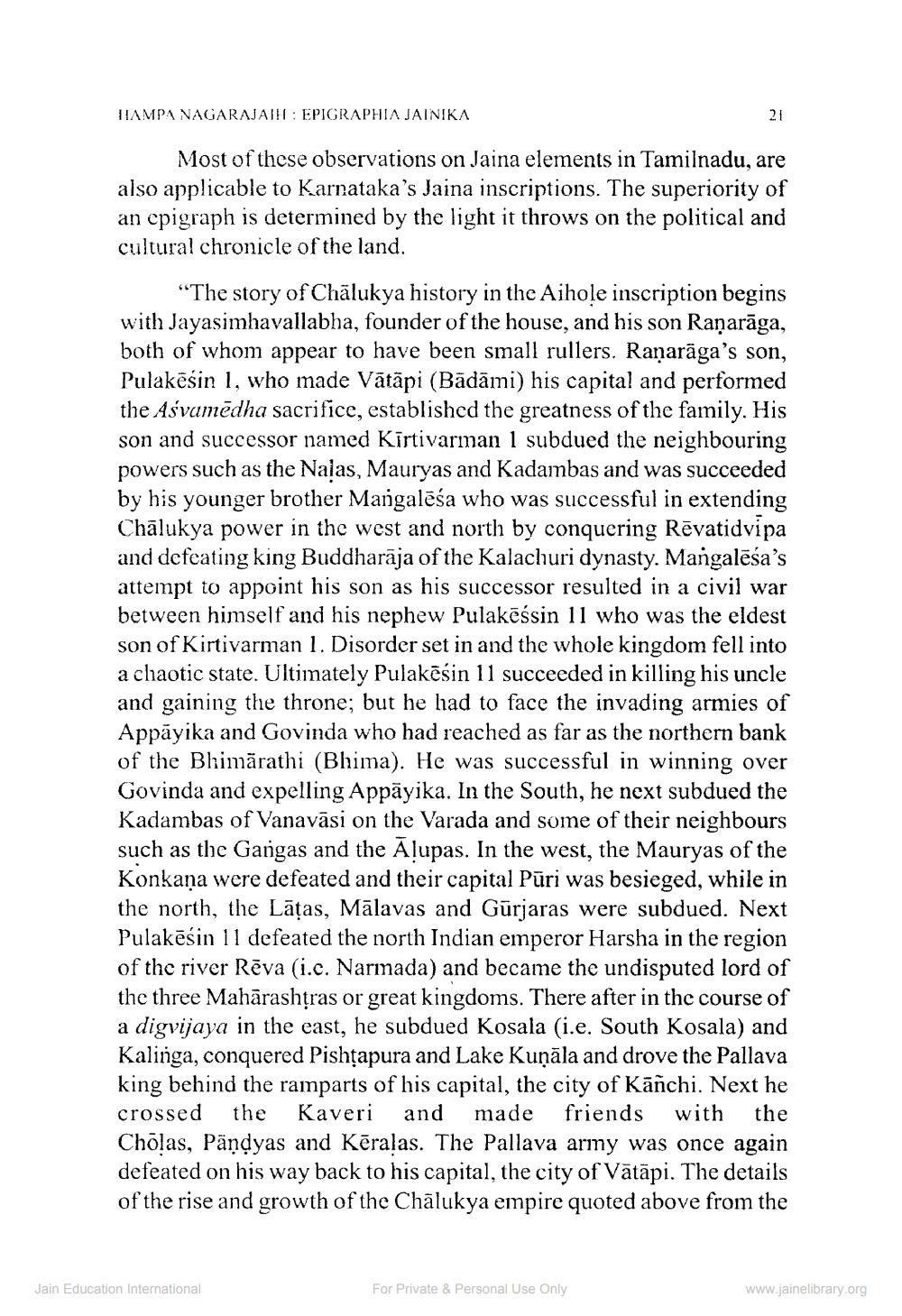________________
TAMPA NAGARAJAIH: EPIGRAPHIA JAINIKA
Most of these observations on Jaina elements in Tamilnadu, are also applicable to Karnataka's Jaina inscriptions. The superiority of an epigraph is determined by the light it throws on the political and cultural chronicle of the land.
"The story of Chalukya history in the Aihole inscription begins with Jayasimhavallabha, founder of the house, and his son Raņarāga, both of whom appear to have been small rullers. Ranarāga's son, Pulakēsin 1, who made Vātāpi (Bādāmi) his capital and performed the Asvamēdha sacrifice, established the greatness of the family. His son and successor named Kirtivarman 1 subdued the neighbouring powers such as the Nalas, Mauryas and Kadambas and was succeeded by his younger brother Mangalēsa who was successful in extending Chālukya power in the west and north by conquering Rēvatidvipa and defeating king Buddharāja of the Kalachuri dynasty. Mangalēša's attempt to appoint his son as his successor resulted in a civil war between himself and his nephew Pulakēśsin 11 who was the eldest son of Kirtivarman 1. Disorder set in and the whole kingdom fell into a chaotic state. Ultimately Pulakēģin 11 succeeded in killing his uncle and gaining the throne; but he had to face the invading armies of Appävika and Govinda who had reached as far as the northern bank of the Bhimārathi (Bhima). He was successful in winning over Govinda and expelling Appāyika. In the South, he next subdued the Kadambas of Vanavāsi on the Varada and some of their neighbours such as the Gangas and the Alupas. In the west, the Mauryas of the Konkaņa were defeated and their capital Pūri was besieged, while in the north, the Lāțas, Mālavas and Gurjaras were subdued. Next Pulakēśin 11 defeated the north Indian emperor Harsha in the region of the river Rēva (i.c. Narmada) and became the undisputed lord of the three Mahārashțras or great kingdoms. There after in the course of a digvijaya in the east, he subdued Kosala (i.e, South Kosala) and Kalinga, conquered Pishtapura and Lake Kuņāla and drove the Pallava king behind the ramparts of his capital, the city of Kāñchi. Next he crossed the Kaveri and made friends with the Cholas, Pandyas and Kēralas. The Pallava army was once again defeated on his way back to his capital, the city of Vātāpi. The details of the rise and growth of the Chālukya empire quoted above from the
Jain Education International
For Private & Personal Use Only
www.jainelibrary.org




